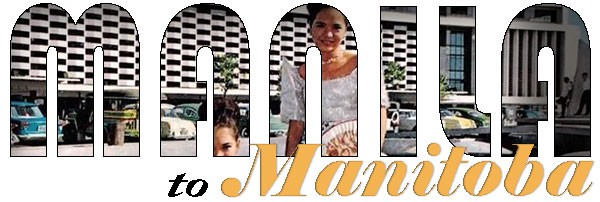In January 1916, the Manitoba legislature approved the bill to make our province the first in Canada to give women the right to vote. This is without a doubt a proud moment in our history as Canadians, as Manitobans, and especially as women. However of those three identities, I am also another. I am also Filipina or, to generalize, I am also racially Asian. So, this got me thinking. Amidst all the celebrations of this important centennial, I am curious to know what this day also means in our multicultural history.
When Nellie McClung and her colleagues appeared at the Walker Theatre in a mock Women’s Parliament in 1914, they represented a disadvantaged portion of Canada’s ruling Anglo-Canadian population. Their call for women’s suffrage was in reaction to their own husband’s, brother’s and father’s chauvinism. Women’s suffrage was about gaining a political voice alongside that of their male and British kin.
Under the 1900 Dominion Elections Act, those with a legal right to vote in a provincial election is also legally entitled to vote in a Federal election. The Women’s vote became possible in Manitoba and later Saskatchewan and Alberta in 1916 (as well as BC and Ontario in 1917). However, the Act still formally denied (male and female) minorities such as the Chinese, Japanese, South Asian and Aboriginal peoples this democratic right.
In British Columbia, where nearly ten percent of the population is represented by Chinese, Japanese, and South Asian-Canadians, this demographic was not only ghettoized and isolated but also restricted in number under immigration law. The Chinese Immigration Act (1885) imposed a hefty $50 head tax on each Chinese arrival. The Gentlemen’s Agreement (Hayashi-Lemieux Agreement, 1908) urged the Japanese government to restrict emigration to Canada to 400 Japanese people per year. Also, the Continuous Journey Regulation (1908) blocked Indian Immigration as the required direct passage from their home country to Canada was impossible. (Dyk 2015)
The numbers of Scandinavian, Jewish, Ukrainian, Polish, Italian and German immigrants already increasing in Winnipeg had other concerns. The Great War and Russia’s “Red Scare” made them a visible threat as newcomers. The General Strike of 1919 culminated with attacks against them for “fomenting radicalism and causing unemployment.” (Palmer 1991, 8-9). Provisions under the 1917 Wartime Elections Act further excluded “enemy aliens” such as Ukrainian and German Canadians the right to vote. (Canadian Immigrant 2011)
 |
| Philip Timms, “Sign on wooden sidewalk in 300 block Cambie Street” (190-) Vancouver Public Library VPL 785423 |
In order for me to celebrate the impact of 100 years of women’s suffrage, I must first reflect on my own identity in terms of gender, nationality and race. If I were alive a century ago, I’m sure this victory would have little significance to me. This news would likely represent a fleeting footnote in my daily struggles as a visible minority. Although the first Filipino-Canadians did not appear in the Canadian census until the 1930s, I have little doubt that my distinguishing Asian features would lump me in with the rest (as it still does in the 21st Century). The truth is that Canadians of Asian Origin were given the right to vote in 1948 (the Japanese in 1949). Notably still, First Nations peoples were only recently extended the right to vote in 1960.(Historica)
So as a woman and a Canadian, I still cheer with the rest of my country. However as I am reminded almost too often, I am still different. I am part of a past where the coloured vote has yet to reach its centennial. It still has a long way to go before a multicultural Canada can truly value and engage all levels of the democratic process.
Bibliography
Canadian Immigrant. 2011. Voting in Canadian History. May 24. Accessed January 28, 2016. http://canadianimmigrant.ca/community/being-canadian/voting-in-history.
Dyk, Lisa Van. 2015. Canadian Immigration Acts and Legislation. Accessed January 28, 2016. http://www.pier21.ca/research/immigration-history/canadian-immigration-acts-and-legislation.
Historica. n.d. Aboriginals and the Vote. Accessed January 28, 2016. http://www.histori.ca/voices/page.do?pageID=316.
—. n.d. Asian-Canadians and the Vote. Accessed January 28, 2016. http://www.histori.ca/voices/page.do?pageID=313.
Palmer, Howard. 1991. Ethnicity and Politics in Canada Since Confederation. Ottawa: Canadian Historical Association.


